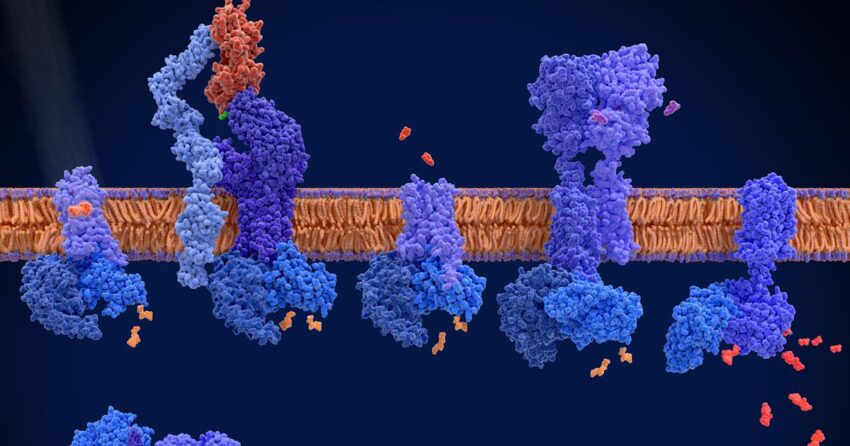DNA-encoded small molecule libraries, also known as DNA-encoded libraries or DELs, have emerged as a powerful new tool for drug discovery in recent years. DELs allow researchers to rapidly screen billions of small molecule structures for desirable properties like binding to disease targets. This represents an enormous expansion in the number of compounds that can be evaluated compared to traditional high-throughput screening methods.
DELs work by linking Global DNA Encoded Libraries tags to vast numbers of small organic molecules. Each molecule is paired with a unique DNA barcode, allowing properties of interest to be identified by decoding the DNA sequences associated with hits. Researchers “read out” the DNA tags of molecules that interact with or modify their target of interest, such as a disease-related protein. This enables properties like enzyme inhibition, receptor binding, or antimicrobial activity to be efficiently identified from DEL screens.
Widespread Adoption Drives Growth In DEL Capabilities
Spurred by their demonstrated ability to discover new drug leads, DELs have seen widespread adoption across the pharmaceutical and biotech industries. Major players like GlaxoSmithKline, Sanofi, Pfizer, and others now routinely incorporate DEL screening into their drug discovery workflows. This validation has driven considerable private investment into DEL developers like Anthropic, Recursion, Elim Biopharmaceuticals, Ambrx, and others.
The growing commercial interest in DELs is propelling rapid innovation in library design. Earlier libraries topped out at roughly one billion structures but now routinely exceed ten billion compounds, with some projected to eventually reach trillions. Improved chemistry allows more complex, drug-like scaffolds to be encoded. Novel linkers enable libraries to explore previously inaccessible chemical space. And new screening methods better mimic in vivo conditions like transmembrane gradients or tissue microenvironments.
Transforming Drug Discovery Via DNA Encoded Libraries
DELs represent a true paradigm shift for drug discovery. By enabling unprecedented levels of chemical diversity and screening throughput, DELs offer several major advantages over traditional approaches:
Faster Lead Discovery – DEL screens can identify initial hit compounds within days to weeks, versus months for high-throughput screening. This accelerates the entire drug development timeline.
Broader Chemical Space – Traditional synthesis struggles with highly complex molecules, reactive groups, and stereochemistry. DELs transcend these limitations, exploring vastly more chemical diversity.
Rare Hit Identification – Billion-member DELs allow rare interaction events, like with undruggable targets, to be discerned amidst background noise. This expands the druggable target universe.
Iterative Optimization – Fast readouts enableHits identified from DEL screens can be iteratively optimized via medicinal chemistry more rapidly than is possible through synthesis alone.
Multi-Target Screening – DNA encoded libraries permit comprehensive simultaneous screens against entire interactome networks or multiple targets of interest. This aids polypharmacology strategies.
Moving From Hits To Leads To Clinical Candidates
While DEL screens efficiently discover initial hit compounds, further work is required to develop these hits into leads and drug candidates suitable for clinical studies. The general optimization workflow after DEL hits involve:
Confirmation of Hits – Top hits are resynthesized and binding confirmed using orthogonal biochemical or biophysical assays.
SAR Exploration – Structure-activity relationship studies rapidly interrogate chemical modifications around hit scaffold(s) to improve desirable properties like potency, selectivity, solubility.
ADME/Tox Evaluation – Lead optimization incorporates absorption, distribution, metabolism, excretion and toxicity testing to identify and remedy potential liabilities.
Lead Series Prioritization – Iterative medicinal chemistry and screening home in on one or more optimized lead series meeting preclinical development criteria.
Candidate Nomination – Thorough preclinical profiling and manufacturability analyses yield one or more development candidates ready for initial clinical trials.
While this post-hit optimization work requires substantial resources, DNA encoded libraries give researchers an immense head start through their unmatched abilities for hit generation. Many projects now progress all the way from DEL hits to clinical candidates within a fraction of the traditional timeframe and cost.
The Future Of DEL-Enabled Drug Discovery
DEL technology looks poised to fundamentally change the drug discovery landscape in the coming decades. Improvements to library size, design complexity, and screening technologies will continue expanding DEL capabilities. Their demonstrable ability to discover drugs for previously intractable targets suggests future DEL campaigns may deliver new medicines for diseases like cancer, neurodegeneration, and microbial infections.
Integration with complementary techniques like DNA-programmable protein design, AI/machine learning, and organ-chip models will further boost DEL success rates. And widespread adoption could make high-throughput DEL screening as commonplace a drug discovery tool as molecular docking is today, revolutionizing pharmaceutical innovation globally. Ultimately, DNA-encoded libraries may realize the long-held dream in drug discovery of systematically exploring all of druggable chemical space to deliver new remedies for many of humanity’s most serious health challenges.
*Note:
1. Source: Coherent Market Insights, Public sources, Desk research
2. We have leveraged AI tools to mine information and compile it

